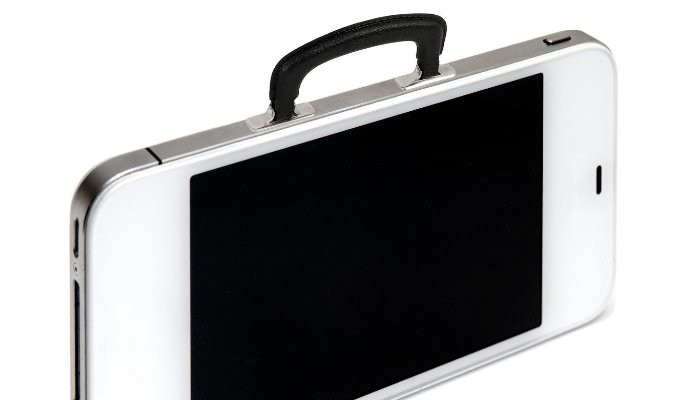
The Rise of the Cell Phone Era and the Implications for Business
Last week as I was reading about Samsung phones approved for use in the UK Government, it occurred to me how much business we conduct on our smartphones and how this use continues to evolve.
Growing up, when I called my dad during the day, I’d ring his office. I’d either reach him personally or reach his voicemail, which, recorded daily, provided me with his schedule so that I’d know exactly when to call back. It was reliable and informative, and designed to be there when my dad was not available.
I remember when my father came home with a “bag phone,” a large transportable phone easily carried in a bag with a shoulder strap. Following this phone, in relatively close succession, were a variety of cell phones in all sizes. What started as a large mobile phone quickly decreased in size again, and again, and again. Cell phones quickly became a commodity where providers were competing for market share, improving cell phone reliability and bringing down costs.
Then came the introduction of the smartphone, initially as a business device, starting with Palm Pilots and followed by the BlackBerry. The main applications were contacts, calendar, email and phones calls. Very quickly these smartphones transitioned into must-have consumer devices with some more progressive consumers adopting the BlackBerry, and then gaining more mass appeal with the iPhone and Android. These consumer devices included cameras and applications, including social media and games. People not only enjoyed these devices but they relied on them; they were almost addicted to them (and still are). Consumers started bringing these personal devices into work – and businesses were forced to figure out a way to accept them.
Today, smartphones provide all the tools necessary to conduct business; including internet and cell network connectivity, phone, messaging, camera, email, and file sharing. They themselves have become a hybrid of personal affinity and business criticality. On a single device I can speak on the phone with a colleague discussing important business, and then minutes later take a picture, email it to my entire address book, blast it to my social networks, and send a message to my friends via multiple messaging apps.
This has caused a global shift because of the ease of communicating via phone. The result is a virtuous spiral in which increased use of smartphones leads to greater number of business and personal applications, and so on.
Like many others, I no longer have an office phone; I have my smartphone. On my business card, my cell phone number is listed. If you call the office looking for me, they’ll probably provide you with my cell phone number. Along with providing colleagues and customers the convenience of connecting with me anytime and anywhere, is the fact that I can be working from anywhere. I may be on vacation in Cambodia, or travelling on business to China or the Middle East. Regardless, I will probably pick up the phone and discuss whatever important business you’ve called about.
As a direct result, significant business is conducted over smartphones. I’d like to argue that most people are largely unaware that more business, intellectual property and corporate secrets are divulged over mobile networks than most other mediums.
The price we pay for this convenience is a potential loss of security and privacy. As most security and risk professionals know, the more vectors, the more opportunity for malicious action, whether it be a cyber-attacker or a competitive organization tapping a call. Today we are aware that mobile communications, even in the most fundamental of uses such as making a phone call or sending a text message are vulnerable to interception with equipment commercially available for less than $1500.
A lot of people, and even businesses, try to sweep these realities under the rug, because they don’t want to change their operations or lose their convenience. Many consumers are waiting for their carriers to handle this for them; while many businesses are stuck behind walls of policies that can’t help them protect their business interactions on the personal phones of their employees. The transition from desktop to mobile is nontrivial, and has occurred so quickly and seamlessly that not enough people are aware of the risks and those who are aware need the tools and education to go beyond their fear and ensure their privacy and security.
This is a real issue, and it is why I’m so excited to have recently joined KoolSpan, a company that is making an important contribution to securing communications, and providing the education for consumers and the tools for businesses to achieve better privacy and security.
Nowadays, when I come home with a new cell phone, my kids have likely already heard about it. Or they have their own devices that they play games on, or use to talk to their friends. So while I won’t come home with a “bag phone” like my dad and wow them, I will be able to teach them how easy it is to protect themselves when they use their devices to make calls and send texts.
Internal Audit Manager at Intercontinental Exchange (ICE) / New York Stock Exchange
8y... In fact, this post you’re reading was probably researched, composed, edited, proofread, and shared to your millions of readers, all from this 5-inch device which fits (snugly) in your back pocket… Great post and good luck!
Experienced Executive, Consultant and Board Member Director-Milwaukee Valve Company, Inc. Director-Pelstar, LLC
8yMs. Wiedermann, I couldn't agree more. Hopefully, businesses and individual consumers will quickly address the security risks you have outlined so articulately